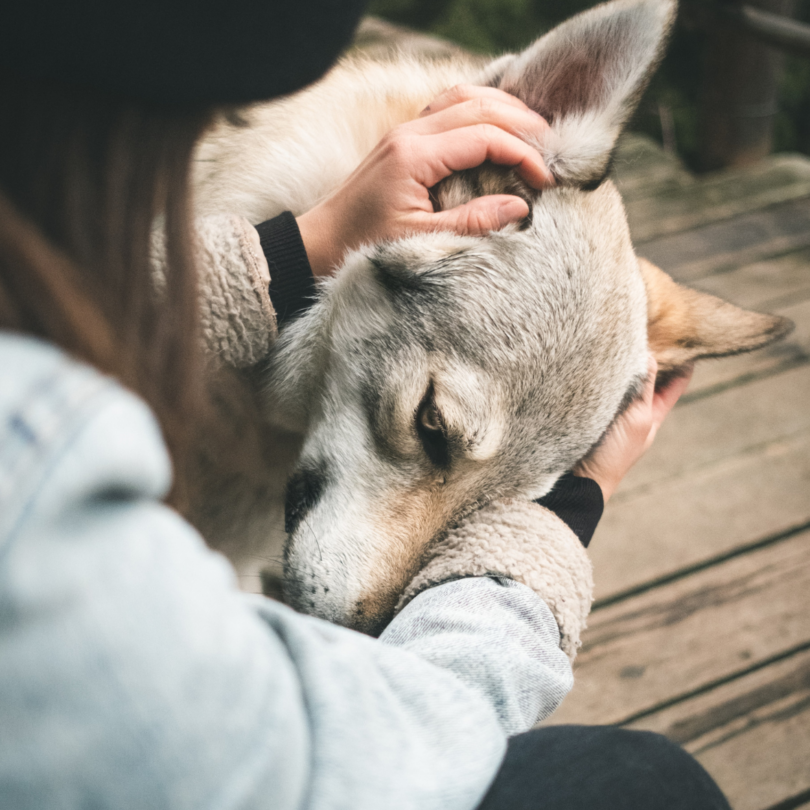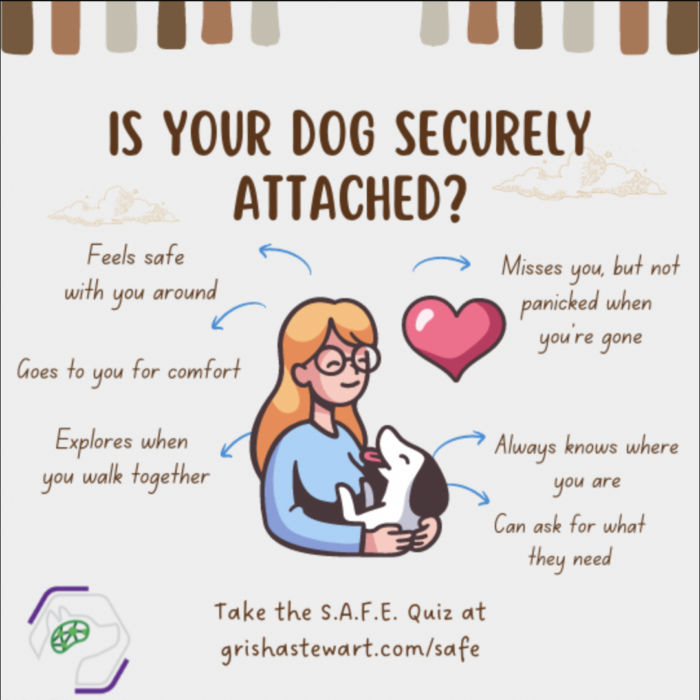In episode 54 of the Paws & Reward Podcast, I speak with Grisha Stewart about attachment styles and the human-canine bond. Grisha is an author, international speaker, dog trainer, and online dog school facilitator based in Oregon. Grisha specializes in dog reactivity which led her to design and launch her book Behavior Adjustment Training, also known as BAT to help dog owners work on these issues in a more comprehensive and humane way. Recently, she’s been working on B.A.T 3.0, focusing on attachment theory and how a secure or insecure attachment impacts our relationship with our dogs. Watch our conversation on my YouTube Channel.
What is attachment theory? And what are the different types?
Attachment theory is the concept that we become attached to others for our own survival. It’s something we evolved to have but it’s also a learned behavior that is dependent on the environment.
The different styles are:
- Secure Attachment: when we are comfortable loving, expressing love, and receiving love We are comfortable with needing someone and being reliant on others and having others rely on us.
- Anxious Attachment: when people are afraid of being abandoned, they cannot trust relationships to be stable.
- Avoidant Attachment: the fear of being consumed in a relationship, they are unable to set boundaries and enforce them within relationships.
- Disorganized Attachment: a combination of both avoidant and anxious attachment styles.
Along with different attachment styles, there are also different response classes:
- Proximity Seeking: wanting to be around our attachment figure.
- Safe Haven: attachment figure is the safest place to go when there is a perceived threat.
- Secure Base: a safe place from which we can go explore and come back to our attachment figure to check in.
With secure attachments, there are ruptures and repairs that happen often and are small. It’s a normal pattern in all relationships and when the attachment is secure, the repairs are easy. With insecure attachments, the ruptures are more noticeable and those within the relationship might not have the skills to repair them as easily or quickly. You can read more about these styles and their responses on Grisha Stewart’s website.
What does your S.A.F.E. acronym stand for?
The acronym S.A.F.E. stands for Safe Attachment Family Education. In Grisha Stewart’s blog post titled The New S.A.F.E. Framework for Dog Training and Care: Safe Attachment Family Education, she writes, “Life is less scary, less painful, and more interesting with healthy attachments. We can make life better for our dogs by paying attention to their experience of attachment relationships. To that end, I’ve developed a framework to systematically apply attachment theory to canine learning, which I call Secure Attachment Family Education (S.A.F.E.).”
There are 5 pillars of secure attachment.
- Felt Safety – consistency, reliability, and protection. “I am safe.”
- Attunement- being seen and known. Can your dog express what they need and be understood? This may look like attention-seeking or giving us signs they are reaching threshold and would like to avoid a certain situation. Do we listen?
- Felt Comfort – soothing your dog when they are distressed. They know what comfort feels like and they seek it out from you.
- Being Valued – your dog knows the human delights in their presence. Our dogs are excited when we come home, are we equally excited to see them? Do we express that excitement?
- Support to Explore – consistent, reliable, and unconditional support for their exploration as a dog. Do we keep them on a tight leash at all times or do we give them space and opportunities to just be a dog?
How can we determine our attachment dog’s style?
S.A.F.E. Dog Interactions: Take the Quiz! Created by Grisha Stewart
- Does the dog consistently feel safe or are they put into situations where they seem afraid, especially ones in which the caregiver doesn’t protect them? Is the caregiver always safe or sometimes dangerous? Some behavioral signs of a feeling of safety are curious exploration and willingness to approach.
- Does the dog have a way to express their needs and interests in a way that the caregiver understands? Does the caregiver make it clear that they understand the dog’s needs (even if it’s not always possible to meet them) or are the dog’s expression of needs ignored or punished?
- Does the caregiver consistently, effectively connect, and soothe the dog when needed, or is the dog ignored, threatened, or distracted when they cannot cope with distress?
- Do the human and dog delight in each other (play together, positive reinforcement, massage, etc.), or is the human emotionally absent or negative?
- Does the caregiver promote curiosity and provide unconditional support and opportunities to learn from the environment or is that behavior suppressed in favor of directing attention to the handler?
Where to find Grisha Stewart:
- Grisha Stewart’s Website
- Upcoming Webinar: Evolution of B.A.T 3.0 How & Why of Behavior Adjustment Training for Dog Reactivity
- Grisha Stewart’s Online School
Other Resources:
- Attachment and Human Development
- Attachment styles in dogs and their relationship with separation-related disorder
- Self-Awareness and Vulnerability with Your Dog
- Ep 14: Human Behavior Change with Grisha Stewart


